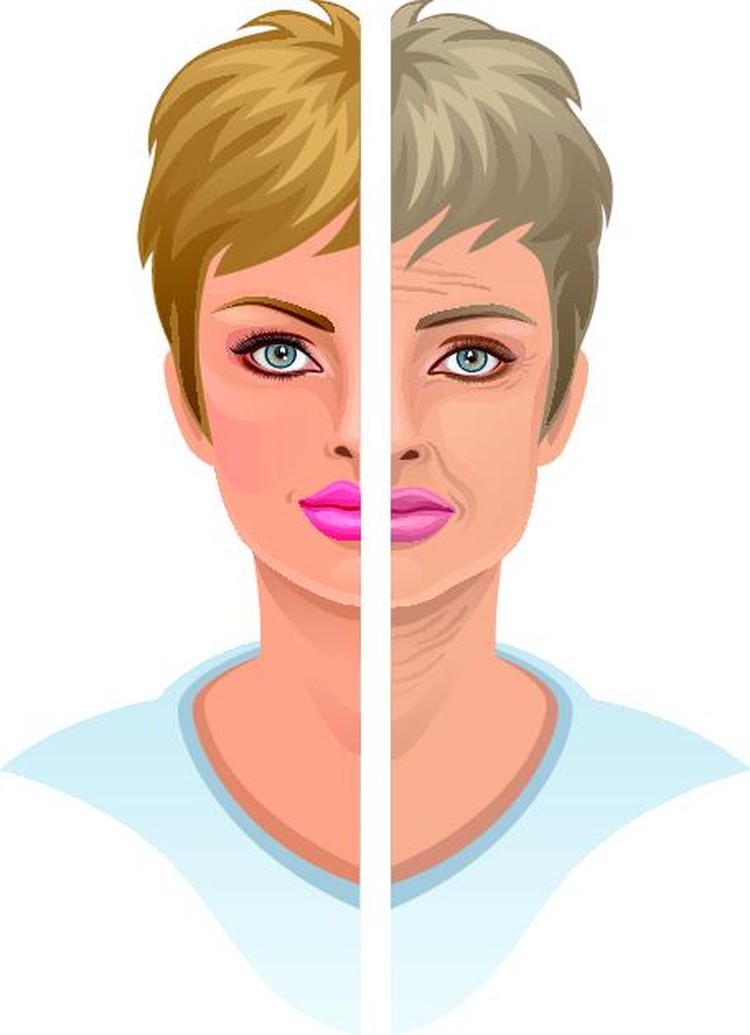We may be living longer but in a culture obsessed with youth, we confront ageism earlier in life than ever before, Marilyn Gardner observes in this article. Today, employees charging age discrimination in the workplace are typically still in their 40s. Gardner, a former staff editor and writer for the Christian Science Monitor, has written sensitively about work, marriage, families, aging and many other issues. Now retired, she’s writing a book. Her article was printed in the Monitor in 2004 and is reprinted with permission from the Christian Science Monitor.
The cruel irony in American culture: we’re living longer, but stereotypes about decline begin earlier.
When the Museum of Science in Boston presented a traveling exhibit called “Secrets of Aging” several years ago, children and young teens could see what they might look like as they grew older. Sitting in a small booth, they simply pushed a button for any year up to 69. Presto! Instant wrinkles, sagging jowls, baggy eyes and gray or thinning hair.
“I don’t want to get old!” wailed an eight-year-old girl as she left the booth, echoing the comments of other distressed children (and their parents).
Who could blame them? As Margaret Morganroth Gullette explains in her original and provocative Aged by Culture (2004), this “freaky” time machine “makes human aging entirely bodily, predictable, and inescapably awful in its concept of decline.” No wonder “age anxiety” afflicts people earlier and earlier.
Gullette, a cultural scholar who calls herself an “age critic,” challenges the belief that decline is the truth of aging. “We are aged more by culture than by chromosomes,” she observes.
In a society obsessed with staying young, images of unavoidable decline appear everywhere. Conspirators include advertisers, business executives, journalists and entertainers. Birthday cards joke about midlife forgetfulness. Women’s magazines tout the advantages of “preventive” face-lifts before 40. Drug manufacturers promote Viagra and hormone-replacement therapy, fueling a boom in “youth restorers.” Media portrayals pit “needy” Gen Xers against “greedy” baby boomers to create what Gullette calls a “generational grudge match.” William Safire even describes those between 40 and 60 as “near-elderly.”
The cliché “You’re only as old as you feel” could be updated to read, “You’re only as old as the culture makes you feel.”
Perhaps nowhere do people find themselves more aged by culture these days than in the workplace. Increasingly, those in their 50s and younger face unemployment or underemployment, stagnant or declining wages and an erosion of respect and seniority.
Ageism may be an ancient prejudice, but middle-ageism is our own postmodern toxin.
Margaret Morganroth Gullette
The typical employee claiming age discrimination has dropped steadily in age from the 50s to the 40s, Gullette notes, while the number of women filing claims is rising significantly. The US Supreme Court ruled in 2000 that states can discriminate on the basis of age, thus altering the Age Discrimination in Employment Act. Yet the court’s decision produced surprisingly little media attention or public outcry, Gullette finds.
The economic and social ramifications loom large. Many who lose jobs in their middle years are unable to find another one at the same level. As Gullette explains, “Ageism may be an ancient prejudice, but middle-ageism is our own postmodern toxin.” She sees a cruel irony: people are living longer, but stereotypes about decline begin earlier.
Gullette does not pretend that changing attitudes and policies will be easy. Age could become as heated an issue in the 21st century as race and gender were in the second half of the 20th century. Discussions about the future of Social Security, for instance, could lead to “entitlement wars” over how to fund the retirement of 76 million baby boomers, provoking what some critics irreverently call a “canes vs kids” rivalry.
Still, since so much of aging is constructed by culture rather than nature, Gullette believes it could be reconstructed. “Perhaps decline can still be rolled back,” she suggests. “We must keep the concept of decline from becoming a reality for more people.” The insistent question for everyone, at every stage of life, she says, should be: “What exactly has age got to do with it?”
To individuals she asks: “Has decline invaded your jokes, your vocabulary, your secret autobiography?” Cut out self-deprecating references to “senior moments,” she advises. Refuse to identify with specific age groups: Gen X, Gen Y, boomer. These only harden the stereotypes. Even museums can help by scrapping those time machines that prophesy decline to eight-year-olds.
When corporate and public policies are at stake, Gullette warns against complacency. Midlifers need to be far more vocal about being “hounded off the stage.”
Gullette’s important message gets muted in places by scholarly writing. And a chapter on child deaths in contemporary American fiction seems oddly out of place. But her central ideas and her solutions deserve attention – and the urgency she calls for.
Suggesting nothing less than a revolution and a resistance movement to defy aging, Gullette quietly observes, “There is a lot to try to reverse.”



